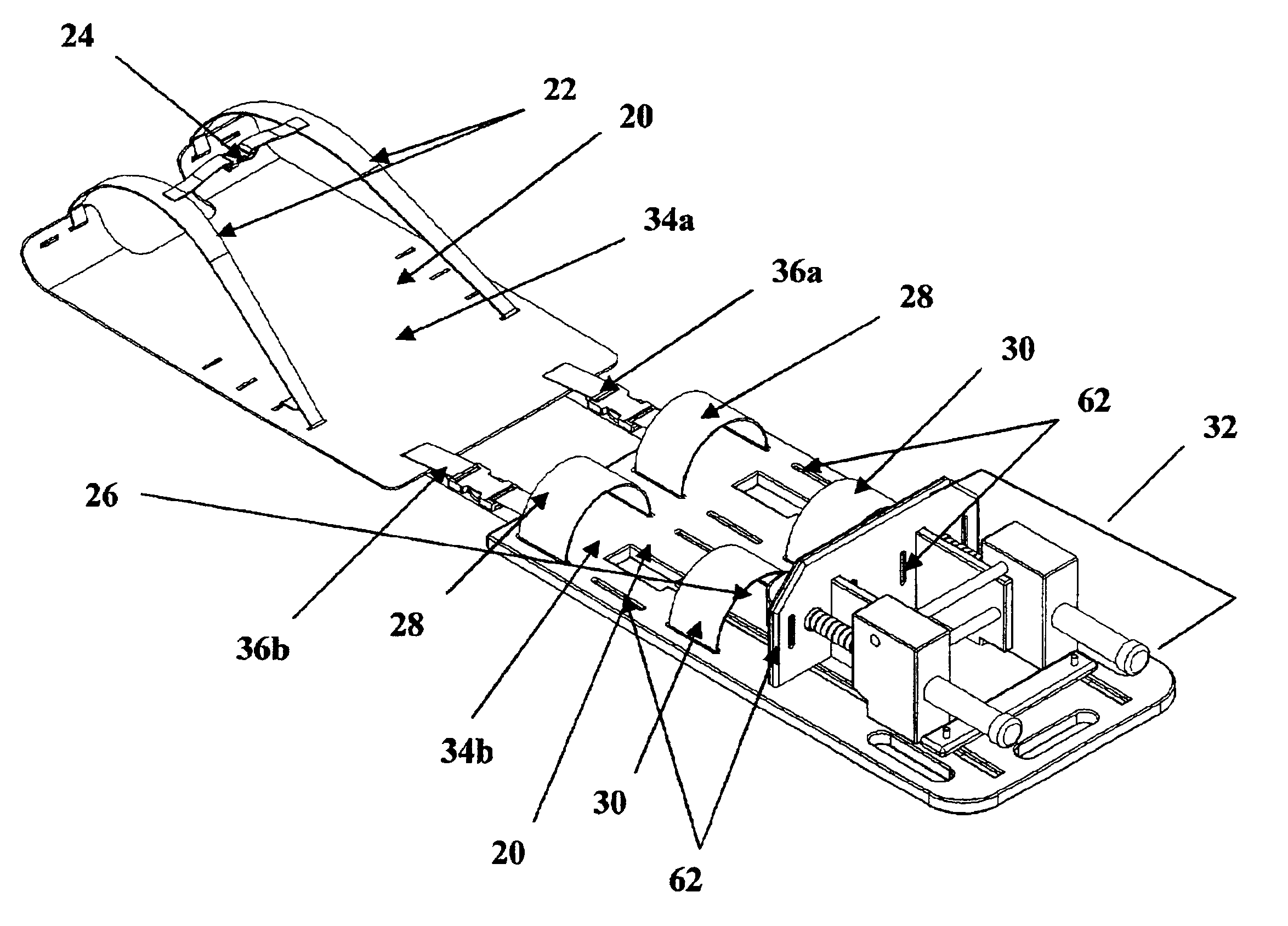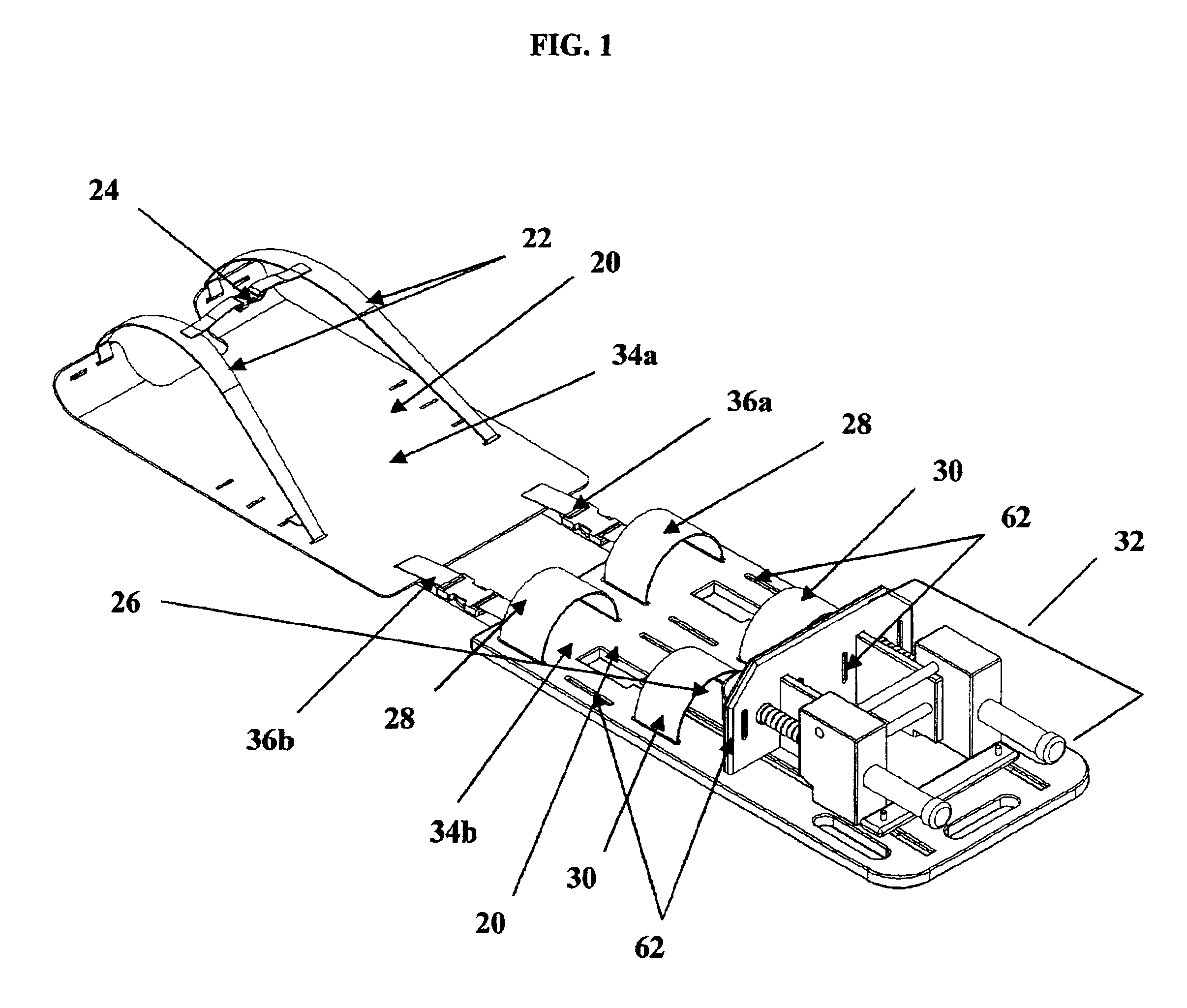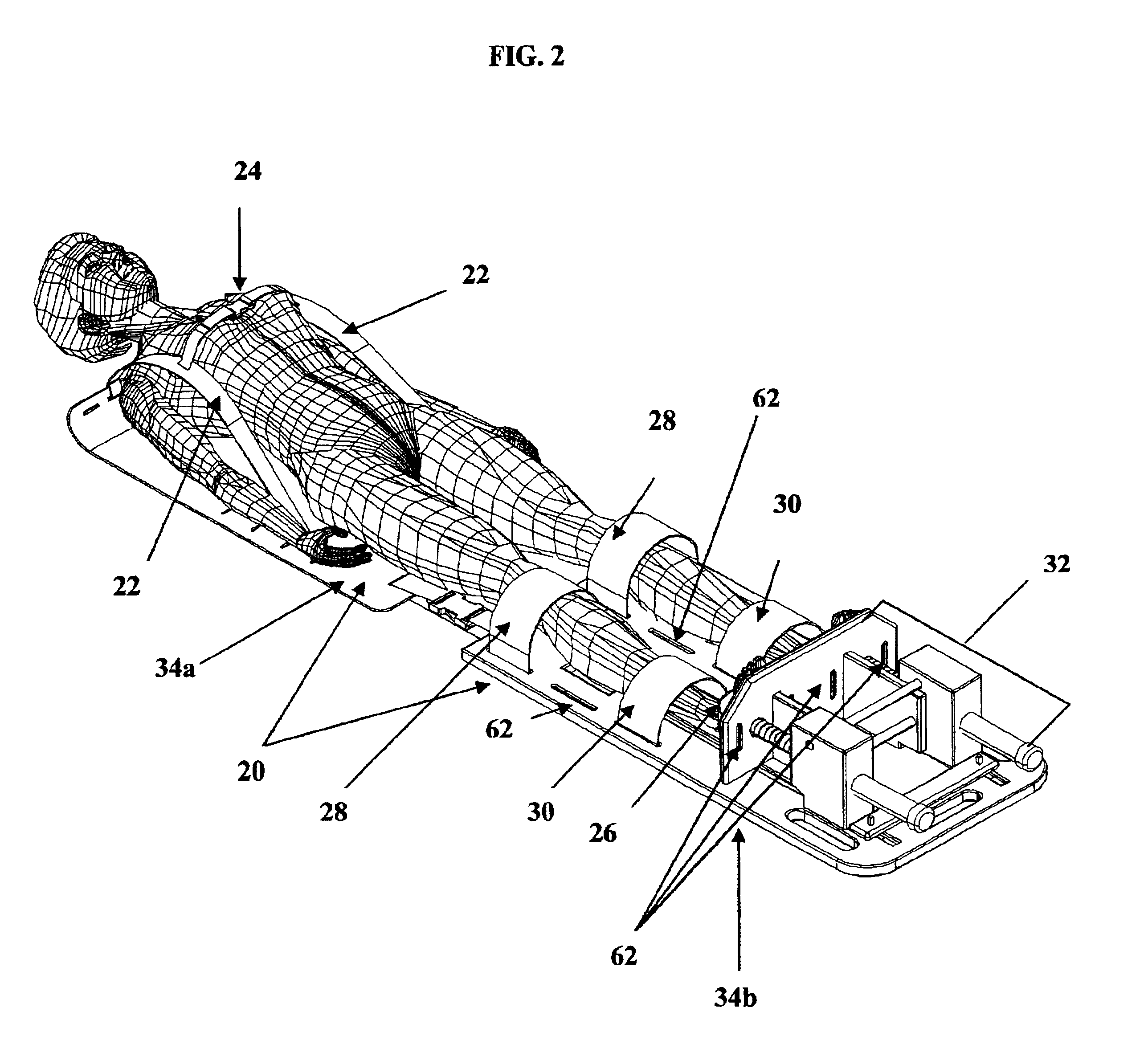Device for immobilizing a patient and compressing a patient's skeleton, joints and spine during diagnostic procedures using an MRI unit, CT scan unit or x-ray unit
a technology for immobilizing patients and patients, which is applied in the direction of patient positioning for diagnostics, applications, sofas, etc., can solve the problems of double the cost, patients regularly moving during the imaging process, and compromise the effectiveness of mri units, ct scan units and x-ray units as diagnostic tools
- Summary
- Abstract
- Description
- Claims
- Application Information
AI Technical Summary
Benefits of technology
Problems solved by technology
Method used
Image
Examples
Embodiment Construction
Referring to FIGS. 1, 2, 3 and 4, a patient resting surface 20 constructed in accordance with the present invention supports a patient in the supine position as shown in FIG. 2. Attached to the first end of the patient resting surface are shoulder immobilizers 22 and a chest immobilizer 24 to secure the patient's shoulders and chest to the patient resting surface as shown in FIG. 2. Attached to the second end of the patient resting surface are, knee immobilizers 28 and lower leg immobilizers 30 to secure the patient's knees and lower legs to the patient resting surface. Attached to the second end of the patient resting surface is a pressure creating apparatus 32 which exerts an upward pressure on the patient who is secured to the patient resting surface as shown in FIG. 2.
The invention will now be described in detail with reference to the attached drawings showing preferred and alternative embodiments of the present invention.
The present invention comprises a patient resting surface...
PUM
 Login to View More
Login to View More Abstract
Description
Claims
Application Information
 Login to View More
Login to View More - R&D
- Intellectual Property
- Life Sciences
- Materials
- Tech Scout
- Unparalleled Data Quality
- Higher Quality Content
- 60% Fewer Hallucinations
Browse by: Latest US Patents, China's latest patents, Technical Efficacy Thesaurus, Application Domain, Technology Topic, Popular Technical Reports.
© 2025 PatSnap. All rights reserved.Legal|Privacy policy|Modern Slavery Act Transparency Statement|Sitemap|About US| Contact US: help@patsnap.com



